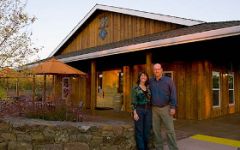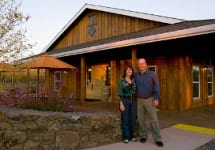Jeff Runquist R Dick Cooper Vineyard Barbera 2017



Product Details
Your Rating
Somm Note
Winemaker Notes
Other Vintages
2019-
Connoisseurs'
Guide


Jeff produces wines from grapes grown throughout California. At last count he was planning to crush over twenty different varieties from nine different appellations for the 2013 vintage. Most of these wines are produced in very small limited quantities. However, there are four principle wines that the winery strives to have available throughout the year and they are: Petite Sirah, Zinfandel, Barbera, and Petit Verdot. ll of Jeff's wines share a theme of fresh fruit reflective of the varietal flavors inherent in the grapes. Jeff selects grapes from vineyards that provide rich full flavors without loads of astringent tannins.

Friendly and approachable, Barbera produces wines in a wide range of styles, from youthful, fresh and fruity to serious, structured and age-worthy. Piedmont is the most famous source of Barbera; those from Asti and Alba garner the most praise. Barbera actually can adapt to many climates and enjoys success in some New World regions. Somm Secret—In the past it wasn’t common or even accepted to age Barbera in oak but today both styles—oaked and unoaked—abound and in fact most Piedmontese producers today produce both styles.

As the lower part of the greater Sierra Foothills appellation, Amador is roughly a plateau whose vineyards grow at 1,200 to 2,000 feet in elevation. It is 100 miles east of both San Francisco and Napa Valley. Most of its wineries are in the oak-studded rolling hillsides of Shenandoah Valley or east in Fiddletown, where elevations are slightly higher.
The Sierra Foothills growing area was among the largest wine producers in the state during the gold rush of the late 1800s. The local wine industry enjoyed great success until just after the turn of the century when fortune-seekers moved elsewhere and its population diminished. With Prohibition, winemaking was totally abandoned, along with its vineyards. But some of these, especially Zinfandel, still remain and are the treasure chest of the Sierra Foothills as we know them.
Most Amador vines are planted in volcanic soils derived primarily from sandy clay loam and decomposed granite. Summer days are hot but nighttime temperatures typically drop 30 degrees and the humidity is low, making this an ideal environment for grape growing. Because there is adequate rain throughout the year and even snow in the winter, dry farming is possible.
